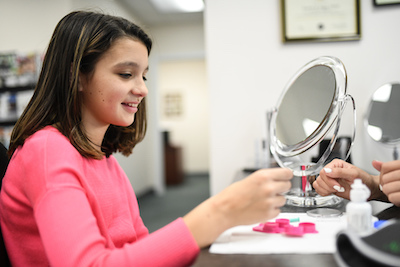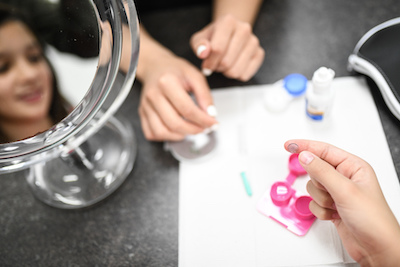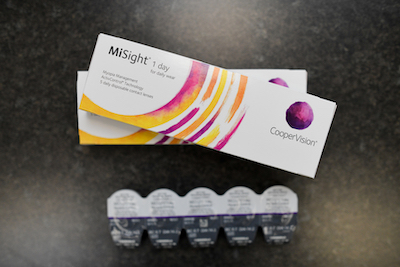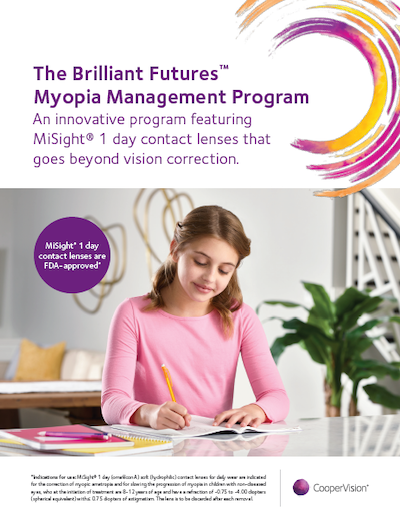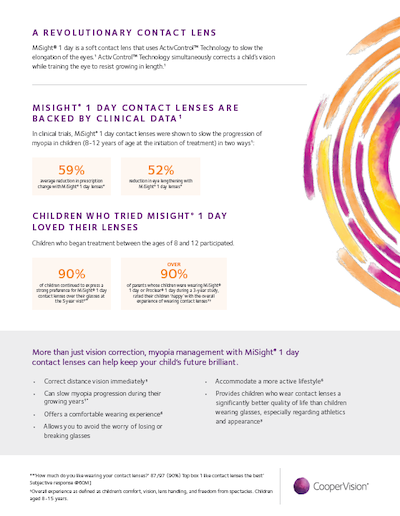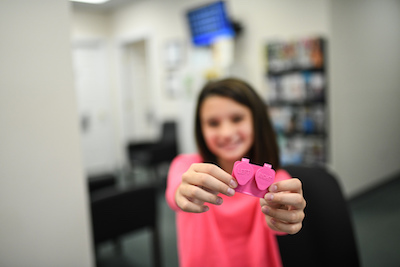Myopia Control
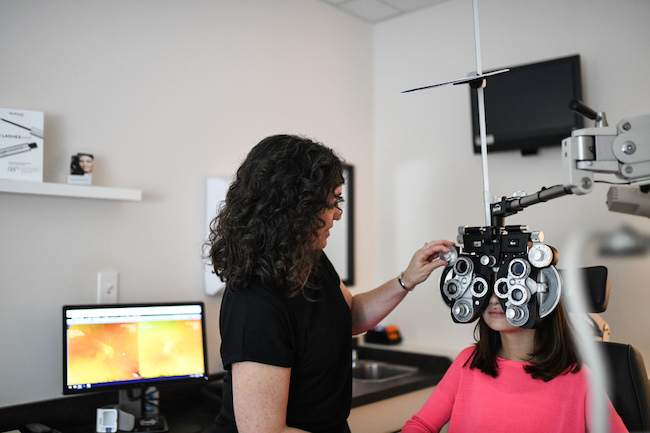
What is Myopia? (Nearsightedness)
Nearsightedness, medically known as myopia, refers to vision that is good at close range but not at a distance. It generally occurs because the eyeball is too “long” as measured from front to back.
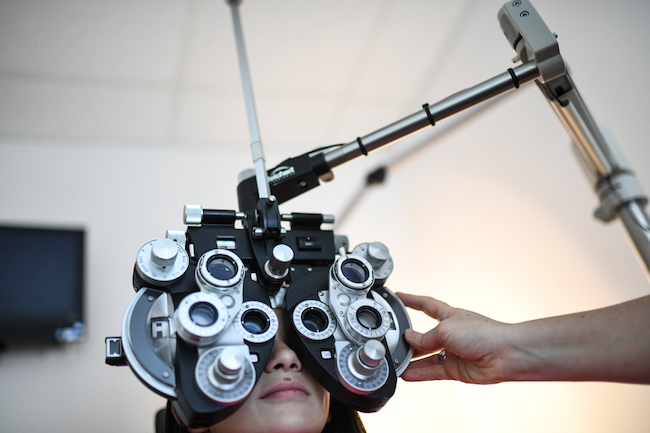 Myopia typically begins in childhood and generally stabilizes by age 20, but it can continue to progress in early adulthood. Children who are nearsighted should have annual eye exams to help maintain excellent vision during the school years.
Myopia typically begins in childhood and generally stabilizes by age 20, but it can continue to progress in early adulthood. Children who are nearsighted should have annual eye exams to help maintain excellent vision during the school years.
A typical complaint of nearsighted schoolchildren is that they have trouble reading what’s written on the classroom chalkboard or whiteboard.
Studies about myopia progression conclude early intervention with special techniques and therapies can slow or stop vision from worsening.
Myopia Symptoms Checklist
There are several symptoms of myopia (nearsightedness), all of which are fairly easy to recognize.
As the name indicates, nearsighted people see nearby objects quite clearly (they are “near-sighted”), but they strain to see things that are farther away.
- Blurry distance vision
- Squinting
- Excessive blinking
- Eye Rubbing
- Headaches
- Eye strain
- Apparent unawareness of distant objects
- Vision worsening each year
Treatment Options for Myopia Control
- Specialized Soft Daily Contact Lenses
- Orthokeratology (OrthoK)
- Lined Bifocal Eyeglasses
- Daily eye drop therapy
MiSight Contact Lenses
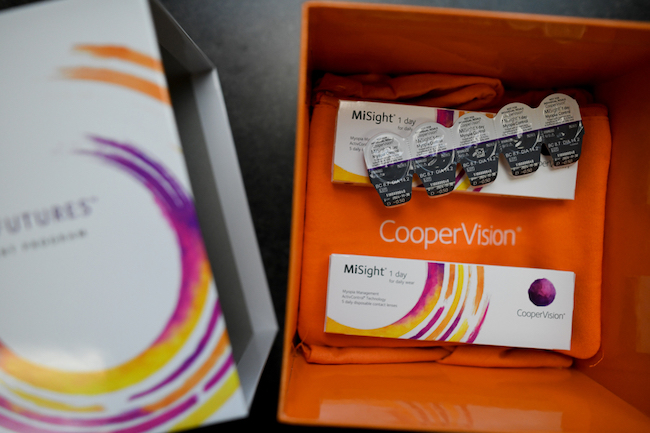 CooperVision’s MiSight® 1 day is the first and only contact lens approved by the FDA to slow the progression of myopia (ages 8-12 at the initiation of treatment)*.
CooperVision’s MiSight® 1 day is the first and only contact lens approved by the FDA to slow the progression of myopia (ages 8-12 at the initiation of treatment)*.
Children can insert the soft, daily wear, single-use contact lenses in their eyes in the morning, wear them for at least 10 hours during the day, then dispose of them in the evening.
The FDA-approved* lens is available as part of a comprehensive myopia management approach offered by CooperVision and participating eye care practitioners.
Orthokeratology, Ortho-K
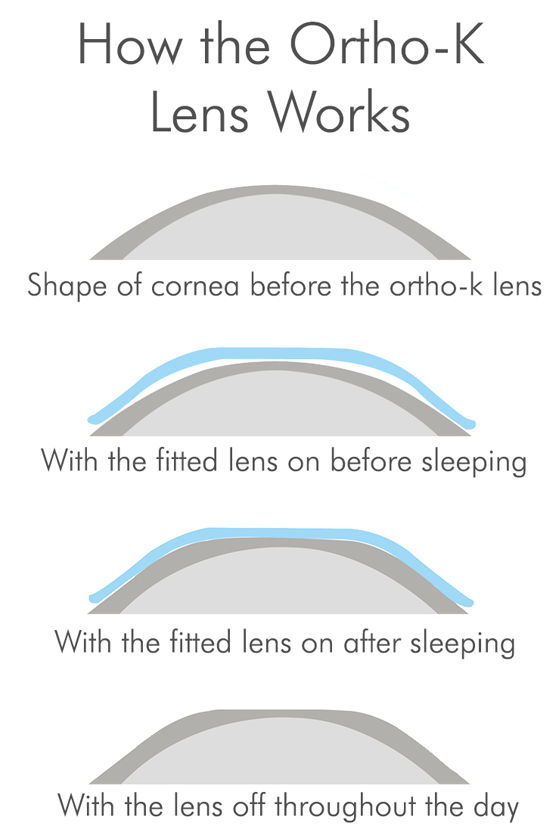
Correct Your Vision Overnight, While You Sleep.
How great would it be to wake up every day with clear vision? To see throughout the day without glasses or contact lenses on?
Orthokeratology is the fitting of custom-designed contact lenses that are worn to sleep. Overnight they gently reshape the front of your eye (cornea) and when removed in the morning, you can see clearly with nothing on! The custom lenses are gas permeable, meaning that they allow your eyes to “breathe” while worn.
This custom service is something that has been offered at Harbor Eyecare Center for over a decade! We have experienced doctors and technology to do it well!
Is Ortho-K Right For Me?
- Do you have difficulty reading the board in the classroom?
- Do you want vision not bothered by contact lenses during the day?
- Are you active in sports and water activities?
- For children is vision progressing each year?
If yes, Ortho-K can clear your vision through the day and slow down how fast a child’s prescription changes!
Bifocal Eyeglasses and Myopia Control
 Bifocals are lenses that are designed to provide the proper distance prescription when viewing distance targets and a lower near prescription when looking to read or use a computer. It has been suggested that the accommodative (near focus) response may play a role in progressive myopia. If the accommodative response is related to the progression of myopia, it seems reasonable that the reduction of the accommodative response through the use of plus reading glasses or through the use of bifocals on already myopic children should have the effect of reducing the rate of progression of myopia in children. Bifocal eyewear studies have not shown the same level of success at minimizing progression over time that OrthoKeratology or the MiSight Daily Soft Contact Lens has shown. However, for children who are not interested in or who are not good candidates for contact lens approaches this does show a reduction in progression if a wide near area lined bifocal is selected.
Bifocals are lenses that are designed to provide the proper distance prescription when viewing distance targets and a lower near prescription when looking to read or use a computer. It has been suggested that the accommodative (near focus) response may play a role in progressive myopia. If the accommodative response is related to the progression of myopia, it seems reasonable that the reduction of the accommodative response through the use of plus reading glasses or through the use of bifocals on already myopic children should have the effect of reducing the rate of progression of myopia in children. Bifocal eyewear studies have not shown the same level of success at minimizing progression over time that OrthoKeratology or the MiSight Daily Soft Contact Lens has shown. However, for children who are not interested in or who are not good candidates for contact lens approaches this does show a reduction in progression if a wide near area lined bifocal is selected.
Daily Eye Drop Medication Therapy
Research data does show that low-concentration atropine eye drop therapy at bedtime helps prevent myopia progression in high-risk children. The concentration for treatment, cost, and availability has limited its use compared to therapies described above. However, we feel this will rapidly become an added option in myopia control for parents to consider. Studies are underway about the length (number of years) of treatment and concentration for optimal effect.



